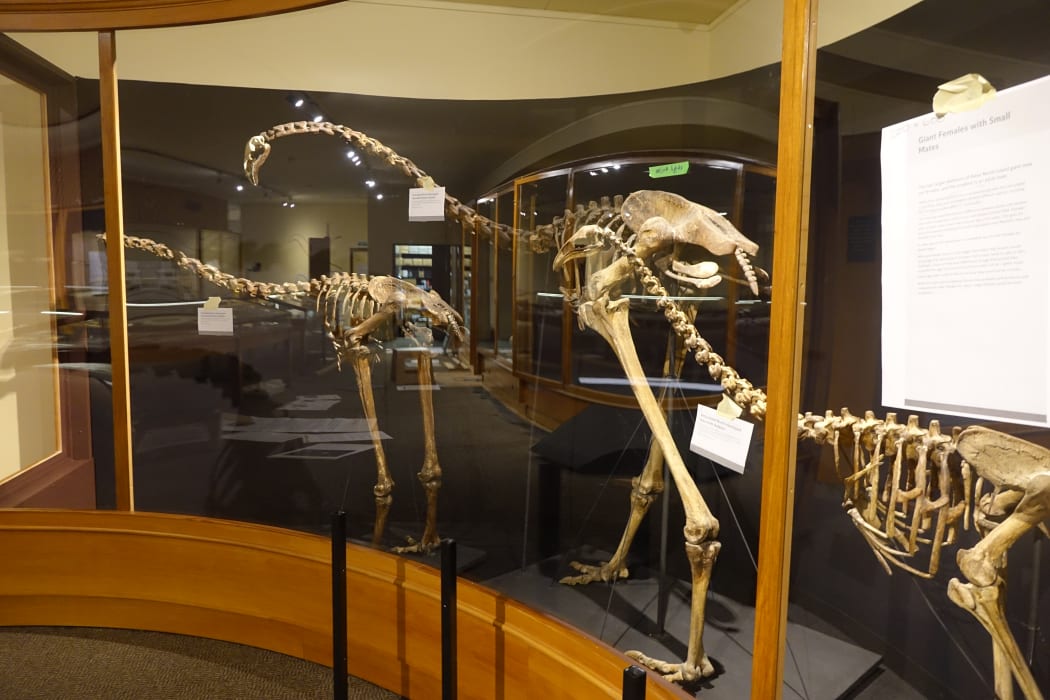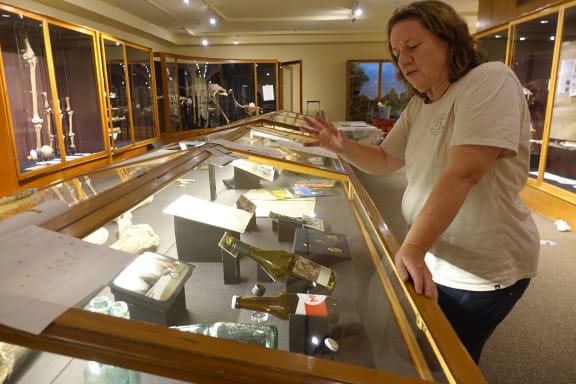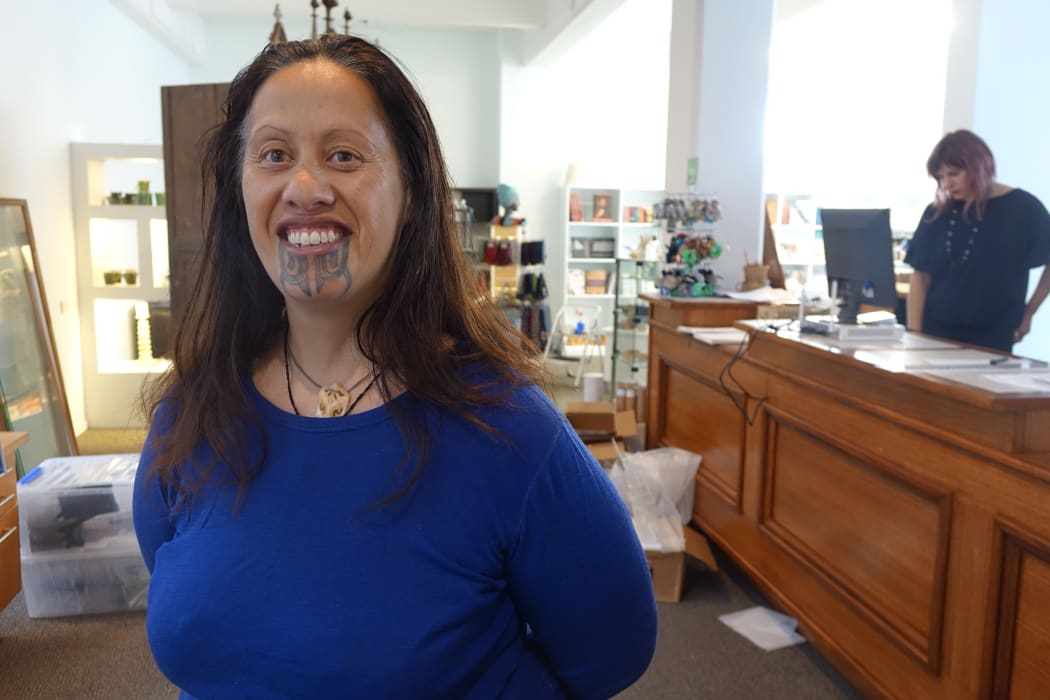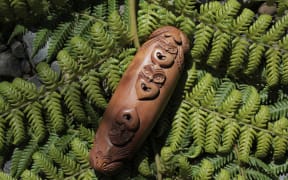The Whanganui Regional Museum has taken a back-to-the-future approach to its relaunch after earthquake strengthening.

Photo: RNZ / Robin Martin
Established in 1895, the museum has been closed since 2016 and reopened to the public at the weekend.
Stepping through the heavy wooden doors at the Whanganui Regional Museum is like travelling back in time. And not just because you're surrounded by artefacts of a bygone era.
The presentation of those taonga speak of an almost forgotten style in museum presentation. Beautifully polished cabinets and glass-covered tables adorn the display areas and there's not a digital or interactive device in sight.
Museum director Frank Stark said that was no accident.
"There are a variety of institutions around the lower North Island which do offer or seek to offer very mediated or digital experience. We think it is actually to our advantage to focus on our strengths which is the collection and the particular values of the architecture and the fittings and furniture of these buildings."
The Whanganui District Council paid $2.25 million to earthquake strengthen the museum which has been at its current Queens Park site since 1928.
The museum raised a further $1.2 million to rejuvenate the display of its collection which numbers close to 300,000 pieces.
Mr Stark said the collection had three key strands.
"One is in taonga Māori. It is a very significant collection in that way and a lot of it will go on show, but only then maybe 10 percent. Another strength is in natural history. Moa, beaked whales, they feature very strongly, and taxidermy.
"And the third area is very specific to Whanganui, which is a history of this region and the people in this region."

Libby Sharpe Photo: RNZ / Robin Martin
Senior curator Libby Sharpe has worked at the museum for 20 years. She said the relaunch had uncovered some quirky new finds.
One of these was gifted to the museum by a man who was at Cooks Gardens in 1962 when Peter Snell ran the first sub four-minute mile in New Zealand, in the process breaking the world record.
"After Peter Snell won his race, he went and dug up a piece of sod from the finish line and kept it all these years. He went and lived in Britain many decades ago and he sent this dried remains of this piece of sod over to feature in our exhibition."
Even the earthquake strengthening revealed hidden treasures.
"We pulled these old walls off to get at the external walls for earthquake proofing and here were these wonderful cabinets and we've restored them and used them. And they have such a style, very distinctive style within our museum building."

Awhina Twomey who is Kaitiaki Taonga Māori at the museum. Photo: RNZ / Robin Martin
Kaitiaki Taonga Māori at the museum, Awhina Twomey, said people were often blown away by the extent of Whanganui's Taonga Māori collection.
"We have real taonga of significance that even other institutes when they come to visit, like Te Papa, they'll say: 'Wow, look at that. I didn't know you had one of those'. Or 'How many [Gottfried] Lindauers do you have?' and I reply: 'We've got about 23 or 24'. And they seem amazed and I'll say: 'Why's that? How many have you got?' and they say 'two'.
Ms Twomey said many items showed a direct link to Polynesia.
"They're more Polynesian than they are Māori, but they were found here in Aotearoa and so we can assume they're like from the first, second those early generations of people that came.
"It's from their era so some of the taonga are from the 1400s and things like that which is unusual."
Meanwhile, Mr Stark said he's confident Whanganui residents and visitors alike will fall in love with the museum all over again. "I hope they'll see it for what it is which is a unique bonsai version of a metropolitan museum."


